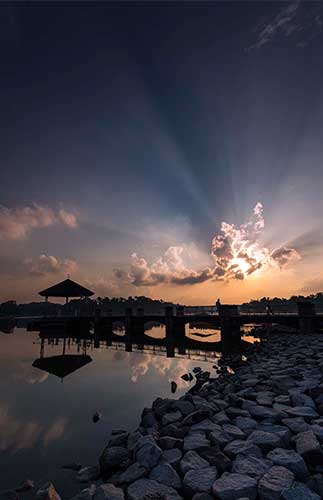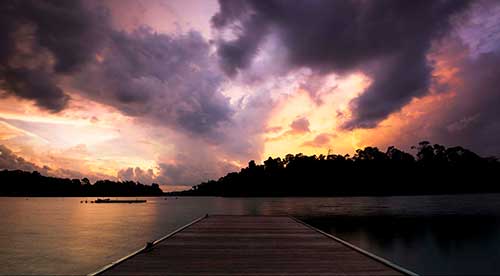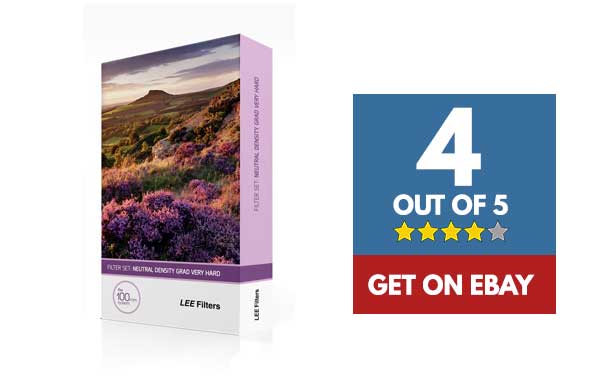INTRODUCTION
A STAPLE FOR LANDSCAPE PHOTOGRAPHERS
Welcome to a review of the Lee Filters Graduated Neutral Density. Every landscape photographer will probably have a set of Graduated Neutral Density (GND) filters and a Circular Polarizer (CPL) in their bag. I have a set of 3 Lee Filters GND in my bag for like, years now.
It has almost never left my bag, and I bring it with me even when I go traveling. That goes to show how much I cannot survive without the set of Lee GND Filters, and in this review, I shall share my experience with the Lee Filters – Read on to find out!
OUTLINE
THE OVERVIEW
| Price | About USD 275 (Set of 3 filters, you can buy them separately, but that will cost more) |
| Links | Official Website: Lee Filters GND Get on eBay: Click Here |
| Build Quality | Punchy contrasty images. Slight color cast. |
| Usefulness | Must have for landscape photographers. |
| Value | On the expensive side. |
| Overall | Expensive, but excellent filters for landscape photographers. |
NAVIGATION
TABLE OF CONTENTS

Section A |

Section B |

Section C |

Closing |
SECTION A
FILTER SET WALKTHROUGH
 The Lee GND filters are freaking expensive, and some may even consider them as the Ferrari of ND filters… But are they really that good? Let us walk through the filter set and some samples in this section.
The Lee GND filters are freaking expensive, and some may even consider them as the Ferrari of ND filters… But are they really that good? Let us walk through the filter set and some samples in this section.
THE FILTERS
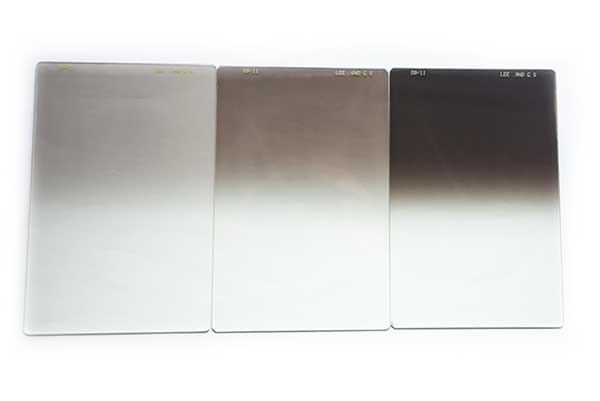
The Lee GNDs are rectangular in shape, measuring 100 mm X 150 mm. For you beginners – This is for a few good reasons.
- Big rectangular filters will fit lenses of almost any size… Except for the gigantic ones with more than 100mm in diameter.
- Do not have a circular frame, they don’t introduce any vignetting.
- You can shift the filter up-and-down, as according to where you need to darken.
- Technically, you don’t need to screw them on, you can hold them in place with your hand quickly.
Also, please take note that the Lee filters are made of high-quality plastic (not glass)… I have broken glass filters in a bad drop before, so I have no beef with it being plastic. This is a set of 3 that I bought – 1 stop GND, 2 stops GND, and 3 stops GND. It also came with a nice cloth carrying case.
CARRYING POUCH
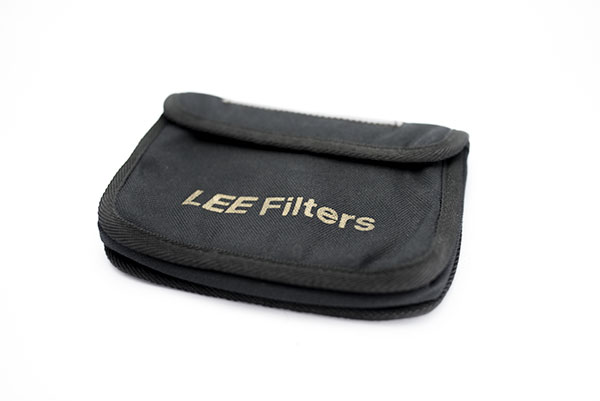
The filter set also came with a carrying pouch. This one holds up to 3 filters (officially), but you sure can squeeze in a couple more. Personally, I still have the trauma of breaking an expensive piece of glass… This soft carrying pouch just doesn’t seem to give a lot of security.
Despite the large ND filters being plastic, any bad pressure points on the filters can still potentially cause them to snap in your bag. So I really cannot recommend this one. Go get your own third-party solid carrying case… They probably cost way lesser than this one too.
MOUNTING RING & HOLDER
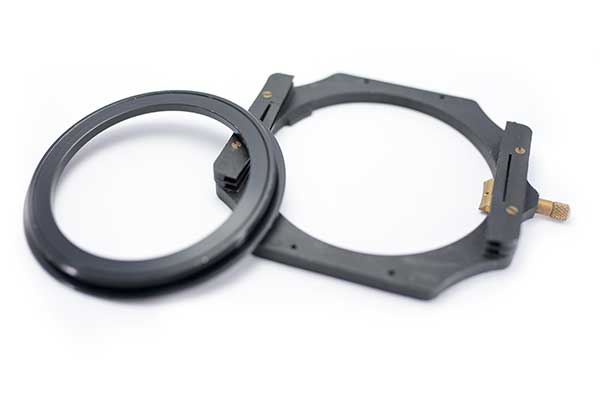
Yes, the plastics filters can be hand-held. But that will be really difficult for long exposures, this is why we need a mounting ring and holder. The original ring here is made of metal and the holder made from hard plastic.
But after many years of using this, I will really recommend getting your own 3rd party holder instead. This “original Lee filter holder” is grossly overpriced. Any third party these days will have decent enough quality, does the same thing, and only costs half.
SAMPLES
The Lee filters may be made of plastic, but they have some serious optical quality. They don’t just block out extra light, but they also bring out the clouds and enhances the contrast of the photo – This is something that cheap pieces of plastic cannot do.
That said, the Lee filter is not perfect. It still has a slight color cast, which I have lived with for years… This is something that you can easily get rid of using Photoshop either way. One last honorable mention, I have not experienced ghosting nor flaring with the plastic filters.
SECTION B
WHAT IS NEUTRAL DENSITY?
 Just started photography and still confused about neutral density filters? Here is a small section to explain it a little more.
Just started photography and still confused about neutral density filters? Here is a small section to explain it a little more.
WHAT DOES IT DO?
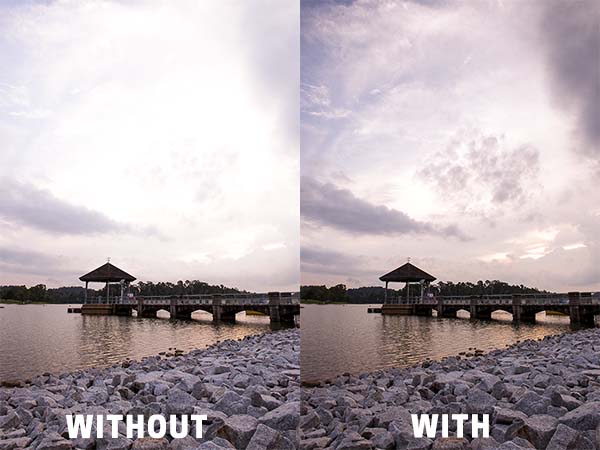
In the layman terms, ND filters are just pieces of dark glass (or plastic) that allow less light to pass through… Something like sunglasses. What are the uses of such pieces of dark glass? Magic. Usually, when we take a landscape photo during a bright day, you might notice the sky to be a lot brighter than the ground.
This results in a boring photo with “nothingness white sky”. We slap a GND filter to cover the sky portion, and voila, the clouds appear like magic (without disturbing the exposure of the ground portion too much).
THE MANY FORMS

ND filters don’t just come in one solid piece. There are those that come in half dark, half-clear, and we call those Graduated Neutral Density (GND).
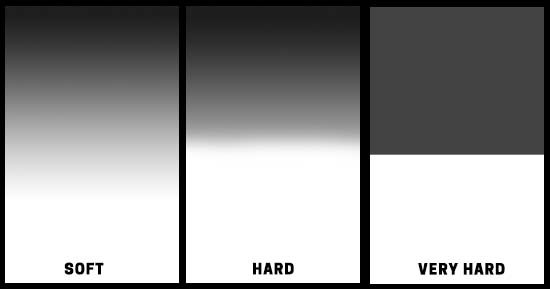
Also, there are many “grades” to GND as well – soft, medium, hard and very hard. Nope, that is not how soft or hard the physical material is. That is how soft or hard the fade line is between the dark and light parts of the filter.
I went with a soft GND, which should make the fade between the sky and ground smooth and nearly invisible. The rest of the medium, hard and very hard have their uses, but you will need to be more precise in aligning the filter with the horizon; the soft fade is more forgiving.
SECTION C
USEFUL BITS
 That’s all for this review, and here is a small section on some extras and links that may be useful to you.
That’s all for this review, and here is a small section on some extras and links that may be useful to you.
THE COMPETITION & ALTERNATIVES
The ND filters sphere has a lot of competition, to name a few – Hoya, Marumi, Tiffen, Singh-Ray, B+W, Vivitar, and Bower. Yes, some of these may be cheaper than the Lee Filters. But honestly, I only have past experiences with Hoya and Marumi ND filters.
While they are decent, they don’t seem to produce the same “contrasty punchy” images as Lee, and they also added a color cast – While they are decently good filters, but the optical quality is definitely behind. It’s all up to you –
THE GOOD
- Amazing optics
- Buy once, fits many lenses
- Boosts the contrast
- No vignetting
THE BAD
- It’s expensive!
- Have to buy separate adapter rings
- Not really bad, but negligible color cast
CLOSING
THE VERDICT
 I started out with a humble set of cheap colored plastic, to the “mainstream Hoya ND filters, tried the Marumi ND filters and finally moved on to Lee. Pricey it was, but that was the best purchase I have ever made as a landscape photographer.
I started out with a humble set of cheap colored plastic, to the “mainstream Hoya ND filters, tried the Marumi ND filters and finally moved on to Lee. Pricey it was, but that was the best purchase I have ever made as a landscape photographer.
The fact that I have not changed a set of ND filters for years, and it being stuck with me everywhere I go, goes to show how satisfied I am. Is it perfect? Of course not, but it is definitely one of the best that I have used to date. Will I change a new set of ND filters? Probably not.
Not until someone sponsors me a new set of filters, and of better quality. So if you are into landscape photography, I shall highly recommend the Lee Filters. It has served me very well for years, and I am sure it will do the same for you too.

